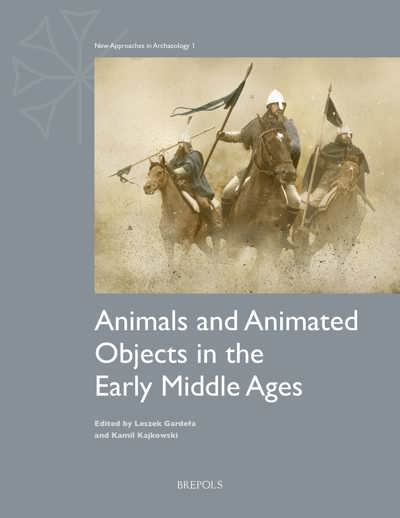
Teaching the Past
Prehistory and Archaeology in European Schools and National Curricula
Michał Pawleta, Katalin Ernyey (eds)
- Pages: approx. 258 p.
- Size:216 x 280 mm
- Illustrations:6 b/w, 52 col., 5 tables b/w.
- Language(s):English
- Publication Year:2026
- € 125,00 EXCL. VAT RETAIL PRICE
- ISBN: 978-2-503-61708-4
- Hardback
- Forthcoming (Feb/26)
- € 125,00 EXCL. VAT RETAIL PRICE
- ISBN: 978-2-503-61709-1
- E-book
- Forthcoming
*How to pre-order?
A timely discussion of how and why to communication archaeological knowledge.
Katalin Ernyey graduated from archaeology and cultural anthropology at the ELTE University, Budapest. She used to specialise in rupestrian archaeology, but for the past 20 years has been working in Hungarian heritage administration, dealing mainly with theoretical aspects of archaeological heritage management.
Michał Pawleta is an associate professor in the Faculty of Archaeology, Adam Mickiewicz University, in Poznań. His research interests include public and community archaeology, protection and management of archaeological heritage, and archaeological theory.
Since the foundation of archaeology as a discipline, archaeologists have aimed to communicate proper information about the past to the wider public. For the most part, however, this dissemination of knowledge has been informal. The teaching of archaeology and of prehistory as part of an adopted national curriculum, meanwhile, has been largely ignored; while subjects such as the ‘Stone Age’ often feature in school curricula, the ways in which archaeology and prehistory are taught has often been disregarded.
This volume aims to fill a gap in our understanding of how archaeological knowledge is disseminated by examining the presence of archaeology and representations of the distant past in school education, particularly through the analysis of history textbooks. The contributors to this volume, drawn from different countries across Europe, here assess the teaching of archaeology and prehistory in their own countries in the light of national perspectives, and distinctive education policies. Covering topics such as the portrayal of prehistory, the use and manipulation of the past, the role of stereotype and myth, and the perceptions of archaeology as a discipline, the papers together shed a unique light on to the dissemination of the material past.
List of Illustrations
Notes on Contributors
Preface
Aknowledgements
1. Teaching the Past. Prehistory and Archaeology in European School and National Curricula: An Introduction
Michał Pawleta
Part I: A Historical Perspective on Teaching Prehistory and Archaeology in Scholarly Settings
2. Archaeology in Polish Schools: Historical Perspectives and the Current Situation
Roksana Chowaniec
3. What Did Archaeology Look Like for School Pupils in Soviet-Occupied Latvia?
Zenta Broka-Lāce
4. Prehistory in German Schoolbooks
Miriam Sénécheau
5. Prehistory and other Dirty Things: Reflections on Greek History Curricula and Primary Textbooks of the Last Forty Years
Kostas Kasvikis
Part II: Prehistory and Archaeology in European School Curricula and Textbooks in the Present
6. Archaeology and Education in England: In and Outside the Classroom
Trudie Cole, Mike Corbishley and Sarah Dhanjal
7. How We Have Lost Prehistory in School Education and in History Textbooks in 2020 in Hungary
Katalin Ernyey and Beatrix F. Romhányi
8. Archaeology and History in Spanish School Curricula
Maria Ruiz del Árbol Moro
9. Gender Representation in Archaeology as a Social Responsibility: A Snapshot of the Gender Balance in Dutch Elementary Schoolbooks
Miyuki J. H. Kerkhof
10. Representing Prehistoric Gender in Finnish and Scandinavian Textbooks
Ilari Aalto and Lauri Kemppinen
Part III: Exploring New Pedagogies for Teaching the Past in Formal Education
11. From Štorch to Neustupný: Living Archaeological Inspiration for School Curricula in Czechoslovakia
Jan Turek
12. Supporting Teaching Incorporates Archaeology into the Danish School Curriculum
Charlotte Abildgaard Paulsen
13. Coda: Teaching the Past and Archaeology in and For the Future
Michał Pawleta and Arkadiusz Marciniak




